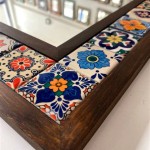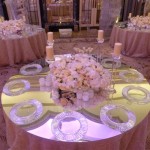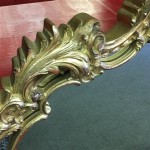How To Hang a Frameless Mirror on Drywall
Hanging a frameless mirror on drywall requires careful planning and execution to ensure both a secure fit and an aesthetically pleasing result. Several factors influence the installation process, including the mirror's size and weight, the wall's condition, and the desired mounting method.
Key Considerations Before Starting
Before beginning the installation, take the following into account:
- Mirror Weight and Size: Heavier and larger mirrors require more robust mounting solutions.
- Wall Condition: Ensure the drywall is in good condition and free of any damage. Repairs might be necessary before mounting a heavy mirror.
- Location: Consider the mirror's placement in relation to lighting and surrounding furniture.
- Stud Finding: Locating wall studs provides added support, especially for heavier mirrors.
- Adhesive Type: Choose an adhesive specifically designed for mirrors and compatible with drywall.
Gathering Necessary Tools and Materials
Having the right tools and materials simplifies the installation process. Gathering everything beforehand streamlines the workflow and minimizes interruptions.
- Mirror Adhesive: Select a high-quality, mirror-specific adhesive. This ensures a strong and lasting bond.
- Measuring Tape: Accurate measurements are crucial for precise placement.
- Level: Guarantees the mirror hangs straight and evenly.
- Pencil: Marking the mirror's position and mounting points on the wall.
- Stud Finder (Optional but Recommended): Locates wall studs for added support.
- Masking Tape: Secure the mirror during adhesive curing.
- Safety Glasses: Eye protection is essential during installation.
- Gloves: Protect hands from adhesive and potential glass shards.
- Mirror Clips or J-Bars (Optional): Provide additional support and stability, especially for larger mirrors.
Preparing the Drywall Surface
A properly prepared surface ensures optimal adhesion and prevents future issues. Cleaning the surface removes dust and debris that might interfere with the bonding process.
- Cleaning: Clean the drywall surface with a damp cloth and mild detergent. Allow it to dry completely.
- Repairing (if necessary): Fill any holes or imperfections with spackle and sand smooth for a uniform surface.
- Priming (Optional): Applying a primer can improve adhesion, particularly on freshly painted or repaired drywall.
Marking the Mirror's Position
Accurate marking is fundamental to achieving a desired aesthetic outcome. Precise measurements prevent crooked or uneven placement.
- Measurements: Measure and mark the desired center point of the mirror on the wall.
- Mirror Outline: Use a pencil and level to mark the mirror's outline on the wall. This creates a guide for adhesive application.
- Double-Checking: Verify the measurements and alignment before proceeding with adhesive application.
Applying the Mirror Adhesive
Proper adhesive application is critical for a secure and long-lasting hold. Following the manufacturer's instructions ensures optimal performance.
- Instructions: Read and follow the adhesive manufacturer's instructions carefully. Different adhesives have varying application methods and curing times.
- Beads or Dots: Apply the adhesive in evenly spaced beads or dots to the back of the mirror, following the manufacturer's recommendations.
- Coverage: Ensure adequate adhesive coverage for the mirror's size and weight, particularly around the edges.
Mounting the Mirror
Carefully mounting the mirror onto the prepared surface is the culmination of the installation process. Precise placement and firm pressure ensure a strong bond.
- Alignment: Carefully align the mirror with the marked outline on the wall.
- Pressure: Apply firm and even pressure to the mirror's surface, ensuring good contact with the adhesive.
- Holding: Hold the mirror in place for the duration recommended by the adhesive manufacturer. This allows the adhesive to begin setting.
Securing the Mirror (Optional)
For added security, especially with larger or heavier mirrors, consider using supporting mechanisms during the curing process.
- Masking Tape: Apply masking tape across the mirror's surface to the wall to hold it in place while the adhesive cures fully.
- Mirror Clips: Install mirror clips or J-bars at the bottom and sides of the mirror for additional support. These can often be removed once the adhesive has fully cured.
- Curing Time: Allow the adhesive to cure completely according to the manufacturer's instructions before removing any supporting tape or clips.
Finishing Touches
Once the adhesive has cured, minor clean-up might be required to complete the installation.
- Cleaning: Carefully remove any excess adhesive from around the mirror's edges.
- Inspection: Inspect the mirror’s placement and stability to ensure it is securely mounted.

How To Install A Mirror Without Frame Merrypad

How To Hang A Frameless Mirror On The Wall With Pictures

How To Hang A Frameless Mirror On The Wall With Pictures

How To Hang A Frameless Mirror June 2024 Your Guide Hanging
:strip_icc()/ScreenShot2022-04-28at1.12.19PM-e055476c70c6438585fa7c5cd531edcf.png?strip=all)
4 Easy Ways To Hang A Heavy Mirror

How To Hang A Frameless Mirror On Wall 3 Methods

How To Hang A Mirror With Clips

How To Hang A Large Or Heavy Mirror

How To Hang A Frameless Mirror On The Wall With Pictures

Here S How To Easily Hang A Frameless Wall Mirror








